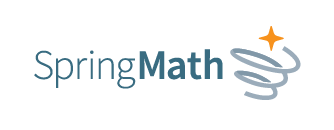Develop an effective response to intervention program
Meeting the educational needs of every student is important to running a successful classroom. Not every student is the same and their response to intervention is different, so a one-size-fits-all approach to intervention does not work. Many educators follow a Response to Intervention (RTI), providing students with the resources they need to achieve more.
What is classwide math intervention?
A classwide intervention strategy is the most common form of teaching but shares similarities with the other tiers. The main focus for all three is helping students understand materials and giving them knowledge expansion opportunities. The only difference is the approach.
The classwide intervention program promotes overall student confidence among their peers by removing the need for math memorization and instead focusing on task mastery. Classwide interventions happen during the already-established lesson plan, creating a time-sensitive strategy by cutting out the need for additional time and assessments outside the classroom.
What is small group intervention?
Students needing just a little extra support in understanding educational concepts or communicating with fellow students are moved to tier 2. This strategy provides a more hands-on approach for teachers while keeping the core processes the same.
This tier of an RTI program focuses on a peer-to-peer approach and open communication between students. Teachers should pair their students strategically. Pair a higher achieving student with a student who may need additional support. It works by both taking turns completing the assessment while providing feedback for each other.
What is individual math intervention?
The individual intervention strategy works best if only a few students in a classroom need additional help and resources. The individual strategy provides daily, 15-minute assessments, but the students work directly with the teacher to complete it. The teacher will walk the student through the assessment, providing kind feedback as needed, while the rest of the class works on the current lesson plan.
The individual intervention program promotes both student and teacher confidence in the SpringMath assessments. This strategy allows the teacher to directly figure out the student’s area of exact need while helping the student build a targeted skills mastery and understanding of basic mathematical concepts. Once the assessments are completed, teachers have easy access to weekly actionable reporting that shows student progress in multiple areas while providing an ongoing plan of action for success.
SpringMath's RTI program
Effective intervention, progress monitoring, and actionable reports make up SpringMath’s comprehensive RTI system. The easy-to-use intervention plans help educators implement them in their classroom seamlessly. Go beyond the standards and provide your students with a holistic approach to math intervention with SpringMath.

